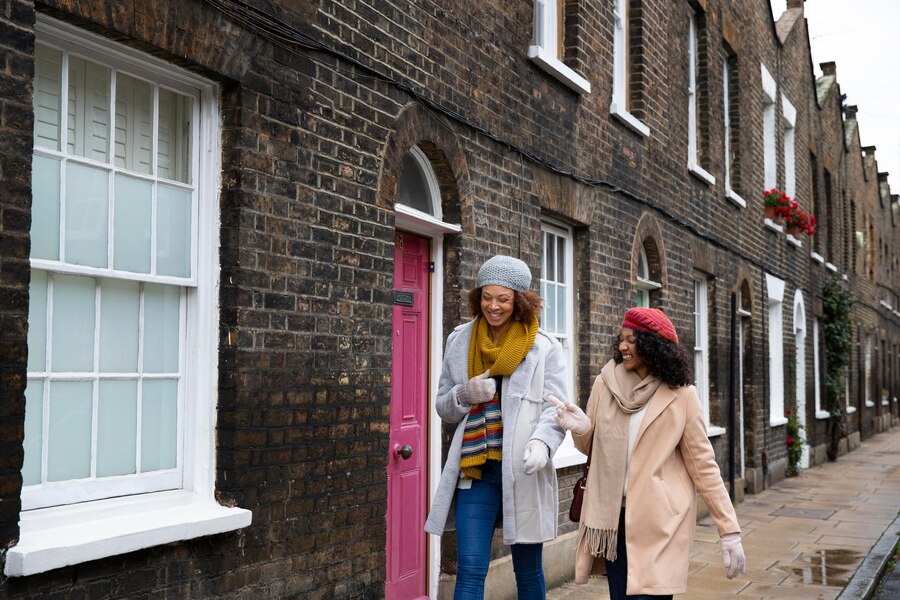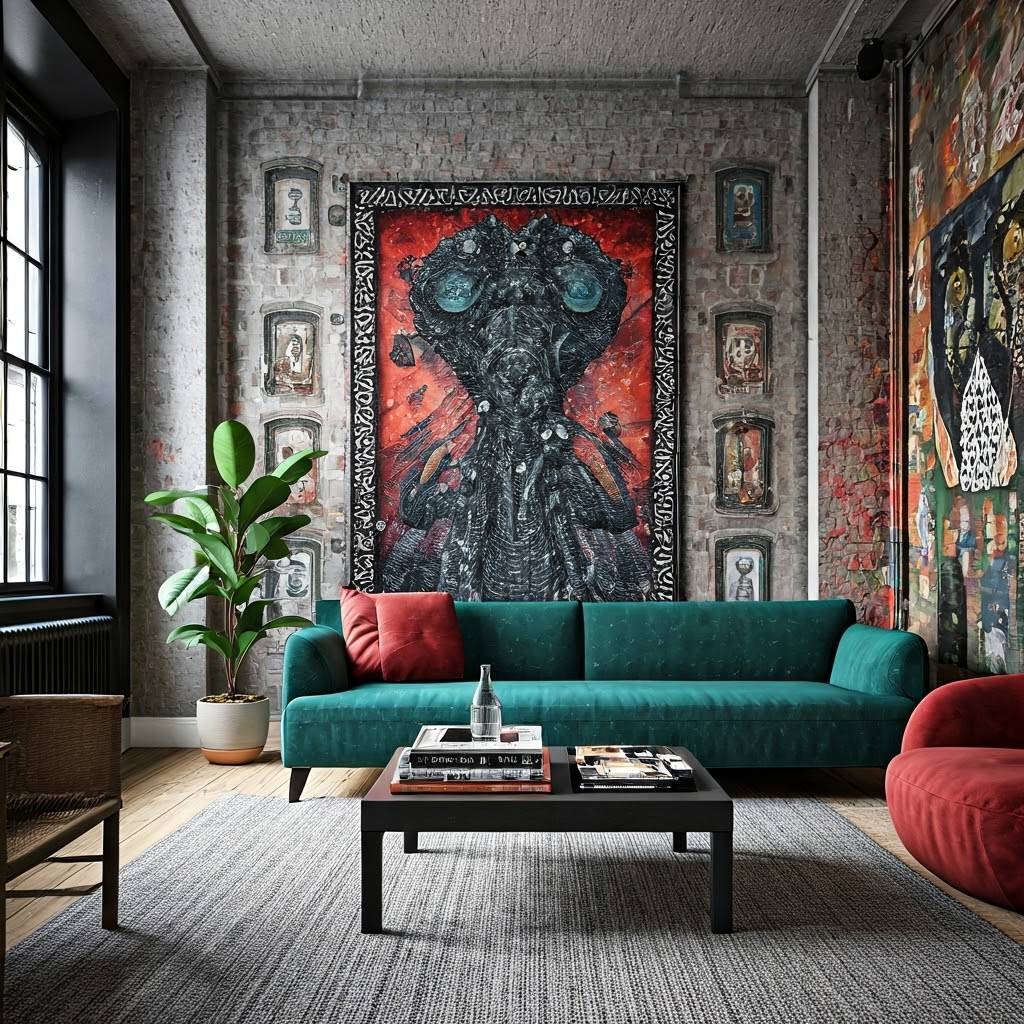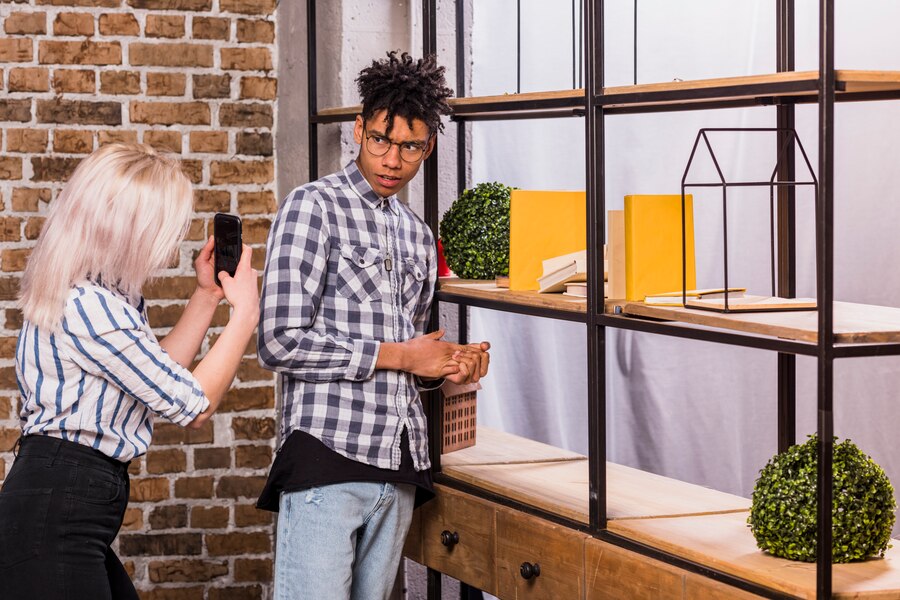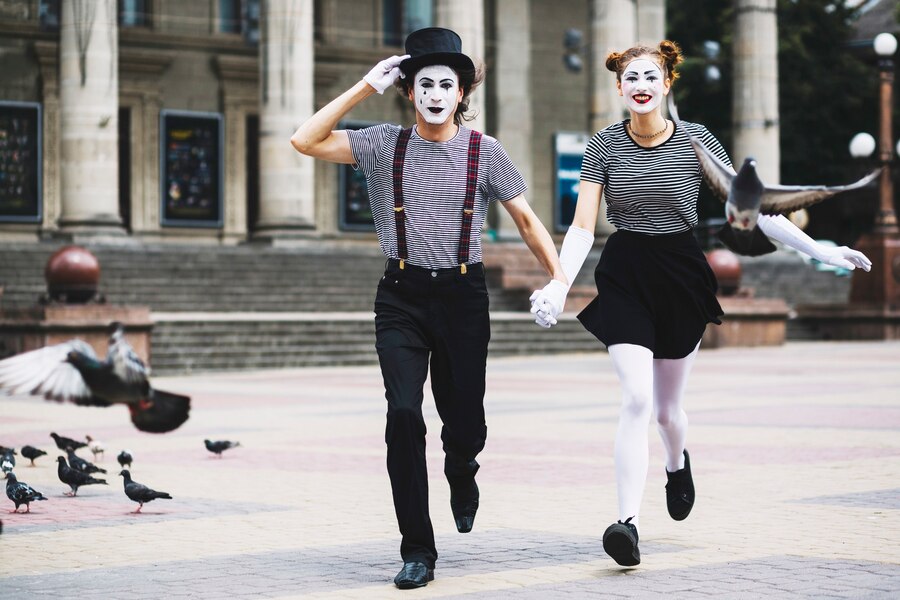Street art, once relegated to the fringes of mainstream culture, has undergone a remarkable evolution in recent decades, especially in cities like London. This vibrant and expressive art form has broken free from the constraints of walls and public spaces to inspire interior design trends that resonate with contemporary aesthetics.
London, a city synonymous with creativity and cultural diversity, stands as a global hub where street art seamlessly influences the realm of interior design. From graffiti-inspired murals to industrial furniture pieces, the impact is evident across various design elements, shaping residential, commercial, and even luxury spaces. But how does street art influence interior design in a city known for its eclectic charm? Let’s delve into this transformative relationship.

The Roots of Street Art in London
London’s street art scene is deeply rooted in the city’s socio-political history. Emerging from the subcultures of the 1970s and 1980s, street art was initially viewed as a rebellious expression against authority and societal norms. Renowned artists like Banksy, Shepard Fairey, and Stik turned the city’s walls into vibrant canvases, blending political commentary with bold visuals. Over time, the growing acceptance and appreciation of street art as a legitimate art form led to its influence spreading beyond outdoor spaces into interiors.
For example, Shoreditch, one of London’s most vibrant neighborhoods, serves as a living gallery for street art and attracts millions of visitors each year. The aesthetic of Shoreditch has found its way into interior design through graffiti-style wallpapers and bold color schemes that echo the area’s vibrant streets. Visit London for an insightful look at Shoreditch’s street art culture.
How Street Art Shapes Interior Design Aesthetics
The influence of street art on interior design lies in its ability to evoke emotion, provoke thought, and create a statement. Designers often incorporate street art elements to bring:
- Bold Colors: Vibrant hues inspired by graffiti art add energy to spaces.
- Dynamic Patterns: Abstract or geometric patterns reflect urban artistry.
- Texture Play: Concrete, brick, and distressed finishes mimic outdoor murals.
- Personalized Spaces: Murals or framed art by local street artists add a touch of individuality.
By using these elements, homeowners and businesses can capture the rebellious yet creative spirit of street art. For instance, the integration of Banksy’s iconic motifs, such as the “Balloon Girl” or “Flower Thrower,” into wall art and furniture design allows spaces to reflect London’s urban identity. Sites like Saatchi Art offer curated collections of graffiti-inspired artworks that can elevate any interior.
The Role of Technology in Bridging Street Art and Interiors
Modern technology has been a driving force behind integrating street art into interior design. Digital tools enable designers to replicate complex graffiti patterns onto wallpapers, fabrics, and even ceramics. This fusion of art and technology allows homeowners to enjoy the essence of street art without commissioning large-scale murals.
Companies like Murals Wallpaper specialize in custom graffiti-inspired designs that bring urban flair into residential and commercial spaces. These solutions are particularly popular in London apartments, where limited space calls for impactful design elements that make a statement.

Comparison Table: Street Art vs. Traditional Interior Art
| Aspect | Street Art Influence | Traditional Interior Art |
|---|---|---|
| Aesthetic | Bold, dynamic, urban | Classic, refined, often minimalist |
| Medium | Murals, graffiti, industrial materials | Paintings, sculptures, textiles |
| Mood | Energetic, rebellious, contemporary | Elegant, timeless, sophisticated |
| Accessibility | Public spaces, urban-inspired décor | Museums, galleries, luxury markets |
| Cost | Affordable to mid-range | Often expensive, depending on artist |
Street Art’s Role in Commercial Interiors
London’s commercial spaces, including restaurants, bars, and offices, have embraced street art as a design tool to foster creativity and attract clientele. In areas like Camden and Brixton, businesses integrate murals and graffiti elements to reflect their local roots and appeal to a younger demographic.
For instance, Google’s London headquarters features vibrant wall art inspired by local street artists, creating a dynamic work environment that encourages innovation. Similarly, the eclectic design of Dishoom’s interiors combines vintage Indian decor with graffiti-style elements to narrate a cultural story. Dezeen frequently highlights such innovative design projects that merge street art with commercial aesthetics.
Street Art Influences on Furniture and Accessories
Beyond walls, street art influences furniture and accessories. Designers are increasingly creating pieces that echo the industrial and urban textures associated with street art culture. Some popular trends include:
- Spray-Painted Furniture: Chairs, tables, and shelves adorned with graffiti-inspired finishes.
- Upcycled Materials: Reclaimed wood or metal pieces with street art motifs.
- Lighting: Neon signs and graffiti-style lamps.
Local artisans and stores like Made.com often showcase collections that align with these trends, making urban-inspired interiors more accessible.
Incorporating Street Art in Residential Interiors
Residential spaces in London—from loft apartments to Victorian townhouses—increasingly reflect street art’s influence. Here are some practical tips for incorporating this style at home:
- Feature Walls: Dedicate a wall to a bold mural or graffiti-inspired wallpaper.
- Art Installations: Include framed street art prints for a subtle touch.
- Industrial Finishes: Expose brick walls or concrete floors to mimic urban settings.
- Accent Pieces: Add cushions, rugs, or throws with graffiti patterns.
For inspiration, platforms like Houzz provide a plethora of ideas to integrate street art into residential interiors.
FAQs
1. What is the main appeal of incorporating street art into interior design?
Street art adds vibrancy, personality, and a contemporary edge to spaces. It helps create unique environments that reflect individuality and urban culture.
2. Can street art work in traditional interiors?
Yes, combining street art elements with traditional interiors can result in an eclectic and visually appealing design. For instance, a graffiti-style mural can contrast beautifully with classic furniture.
3. Is incorporating street art expensive?
Street art-inspired interiors can fit various budgets. While commissioning original murals might be costly, options like wallpapers, prints, and accessories are more affordable.
4. Where can I find street art-inspired decor in London?
Many stores in London, such as those in Shoreditch or Camden, offer graffiti-inspired decor. Online platforms like Etsy also have a wide selection.
5. How can I ensure a cohesive design when using street art elements?
Balance is key. Pair bold street art pieces with neutral tones and minimalist furniture to avoid overwhelming the space.
Conclusion
Street art’s influence on interior design in London underscores the city’s role as a creative epicenter. From bold murals to urban-inspired furniture, this vibrant art form redefines how we perceive and design our spaces. By bridging the gap between outdoor creativity and indoor aesthetics, street art brings the pulse of the city into our homes and workplaces.
Whether you’re looking to make a statement or add subtle urban flair, the possibilities are endless in integrating street art into your interior design journey. So, the next time you stroll through Shoreditch or Camden, take a moment to admire the artistry around you—it might just inspire your next design project.


